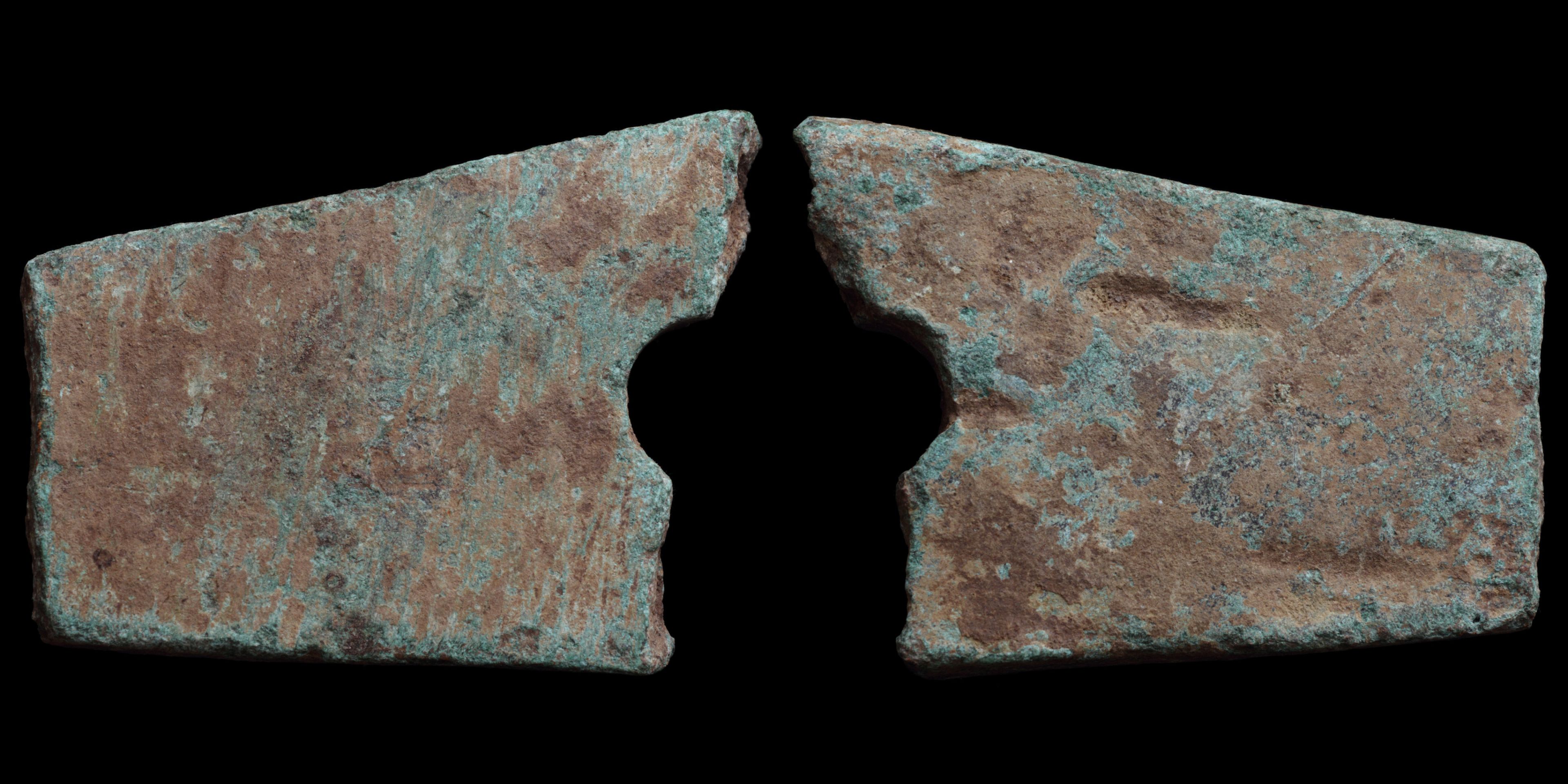Aes formatum, including axe heads, rings, cast bronze shells, domed discs, rods, bars, ingots and bricks, for example, was traded alongside aes rude. All bronze objects were suitable for trade by their weight and were frequently broken to adjust their weight and to make change.
Grueber does not use the term aes formatum in Coins of the Roman Republic in The British Museum, but does describe some examples as follows: "In the find at Vulci, besides the aes rude and the aes signatum there was a number of rough brick-shaped pieces in very poor condition, without any imprint and nothing to indicate their value; their weight varying from an ounce to a pound. These bricks formed about on-sixth of the whole mass. Also there were some elliptical-shaped pieces which represented fractions of the as, most of them corresponding to the weight of the sextans (Mommsen, Hist. mon. rout., t. i., p. 176). These pieces would appear to be intermediate between the as rude and the aes signatum." At the beginning of the 3rd century B.C., aes signatum, a new form of Roman money, appeared.
Grueber does not use the term aes formatum in Coins of the Roman Republic in The British Museum, but does describe some examples as follows: "In the find at Vulci, besides the aes rude and the aes signatum there was a number of rough brick-shaped pieces in very poor condition, without any imprint and nothing to indicate their value; their weight varying from an ounce to a pound. These bricks formed about on-sixth of the whole mass. Also there were some elliptical-shaped pieces which represented fractions of the as, most of them corresponding to the weight of the sextans (Mommsen, Hist. mon. rout., t. i., p. 176). These pieces would appear to be intermediate between the as rude and the aes signatum." At the beginning of the 3rd century B.C., aes signatum, a new form of Roman money, appeared.

(1)
Italia

An
Aes formatum
unit
struck 500-300 BC
in
Italia
Obverse: axe shaped
Reverse:
Diameter:
56 mm
Die Orientation: -
Weight: 67.8 g
Die Orientation: -
Weight: 67.8 g
No notes for this coin
No references provided for this coin
